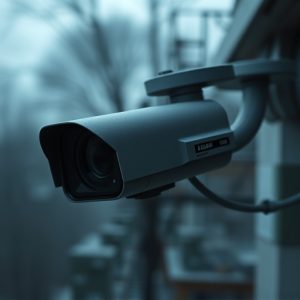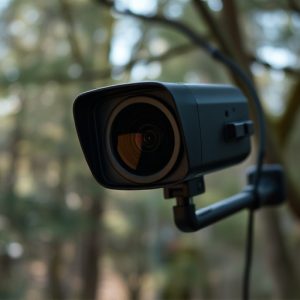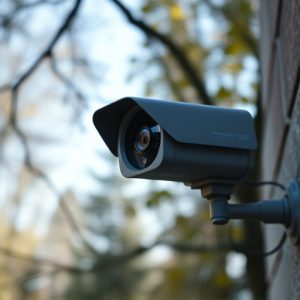Mastering Wireless Surveillance: Tips for Battery-Powered Camera Detection
Battery-powered wireless spy cameras offer discreet monitoring with convenient installation. They in…….
Battery-powered wireless spy cameras offer discreet monitoring with convenient installation. They include essential components like camera modules, processors, memory storage, and batteries, capturing high-res images/videos locally or wirelessly streaming to devices. Effective deployment relies on GPS tracking for precise positioning, overcoming signal interference & obstructions for reliable footage. Security measures such as physical protection, encryption, maintenance checks, alarms, and awareness of regional legal boundaries are crucial to prevent theft, tampering, and ensure ethical use.
Wireless surveillance equipment, particularly battery-powered wireless spy cameras, offers a discreet and versatile monitoring solution. Understanding the fundamentals of these devices is crucial for effective deployment. This article guides you through the process, providing valuable tips on locating hidden cameras, optimizing signal strength, securing your equipment, and navigating legal boundaries. By mastering these aspects, you can harness the power of battery-powered wireless spy cameras to ensure comprehensive surveillance.
- Understanding Battery-Powered Wireless Spy Cameras: The Basics
- Locating Devices: Tricks and Tools for Effective Deployment
- Environmental Considerations: Factors Affecting Signal Strength
- Security Measures: Protecting Your Surveillance Equipment from Theft and Tampering
- Legal Aspects: Know the Limits of Wireless Surveillance in Your Region
Understanding Battery-Powered Wireless Spy Cameras: The Basics
Battery-powered wireless spy cameras have become increasingly popular due to their convenience and ease of installation. These compact devices are designed to operate autonomously, drawing power from internal batteries that allow them to be placed virtually anywhere without the need for an external power source. Understanding how these cameras function is crucial when it comes to effective location detection and maximizing their potential as surveillance tools.
The basic components include a camera module, a processor, memory storage, and a battery compartment. When a motion trigger or timer activates the device, the built-in processor captures high-resolution images or videos and stores them locally on the internal memory. This allows for continuous monitoring without requiring constant connectivity to a central system. Advanced models may also feature wireless communication capabilities, enabling real-time transmission of footage to a smartphone or computer via Wi-Fi or cellular networks.
Locating Devices: Tricks and Tools for Effective Deployment
When it comes to deploying wireless surveillance equipment, especially battery-powered wireless spy cameras, effective location detection is key. The first trick involves utilizing advanced GPS tracking capabilities if outdoor coverage is a concern. Many modern devices come equipped with this feature, allowing for precise real-time location of the camera. This is particularly useful in vast or hidden areas where visual confirmation might be challenging.
Additionally, employing triangulation techniques using multiple receivers can greatly enhance accuracy. This method involves placing several sensors or receivers at known locations to calculate the exact position of the wireless spy camera. It’s a powerful tool when combined with GPS data, offering both indoor and outdoor coverage. Such strategies ensure optimal deployment, making it easier to monitor and access footage from these battery-powered cameras.
Environmental Considerations: Factors Affecting Signal Strength
The performance and range of battery-powered wireless spy cameras can be significantly influenced by environmental conditions. One of the primary factors is signal interference, which can come from various sources like walls, ceilings, large metal objects, or even other electronic devices operating on similar frequencies. These obstructions can weaken or distort the camera’s signal, affecting its ability to transmit clear images and audio.
Another key consideration is line-of-sight obstruction. While wireless cameras often boast wide-angle lenses, obstacles like trees, furniture, or narrow spaces can still block or fragment the direct path between the camera and the receiver. This can lead to reduced video quality or even complete loss of signal connection, especially in dense urban environments or heavily forested areas where line-of-sight is frequently interrupted. Understanding these factors is essential for optimal deployment and reliable monitoring using battery-powered wireless spy cameras.
Security Measures: Protecting Your Surveillance Equipment from Theft and Tampering
Surveillance equipment, especially battery-powered wireless spy cameras, requires robust security measures to protect against theft and tampering. As these devices are often hidden and remotely accessible, they can be attractive targets for criminals. To safeguard your surveillance system, implement physical security measures like secure mounting and enclosure. Use reinforced hardware and consider hiding or masking camera locations to deter casual vandalism. Additionally, employ encryption protocols for data transmission to prevent unauthorized access to footage. Regular maintenance checks can also help identify any tampering attempts early on.
For added protection, integrate the use of alarms and motion sensors that trigger alerts when suspicious activities are detected near the surveillance equipment. This proactive approach ensures that you’re promptly notified of any attempted theft or manipulation, allowing for quick response and potential prevention of data compromise.
Legal Aspects: Know the Limits of Wireless Surveillance in Your Region
When utilizing wireless surveillance equipment, such as battery-powered wireless spy cameras, it’s paramount to understand and comply with the legal boundaries set by your region. The laws surrounding wiretapping and surveillance vary significantly worldwide, so knowing your rights and restrictions is crucial. Unauthorized installation or use of these devices can lead to serious legal consequences, including fines and imprisonment.
Each jurisdiction has its own set of rules regarding consent, privacy, and the types of surveillance equipment permitted. For instance, some regions may require explicit consent from all parties being recorded, while others have more relaxed guidelines. It’s essential to research and familiarize yourself with these laws to ensure your actions remain within legal boundaries. Staying informed protects not only your rights but also helps you utilize wireless spy cameras responsibly and ethically.
Wireless surveillance, particularly with battery-powered wireless spy cameras, offers a powerful tool for security and monitoring. By understanding the technology, deploying equipment strategically (with tricks like triangulation and signal strength analysis), and adhering to legal boundaries, you can ensure effective and secure surveillance. Protect your equipment from theft and tampering through robust security measures, and always be mindful of environmental factors that can impact signal quality. With these tips in hand, you’re well-equipped to navigate the world of wireless surveillance with confidence and within legal limits.


